
10 Bedroom Office Ideas for Functional and Stylish Workspaces
Many people need a space in their home that serves both as a bedroom and an office. Balancing comfort and productivity can be a challenge in one room, especially when space is limited. Understanding how to combine these areas effectively helps create a functional and pleasant environment.
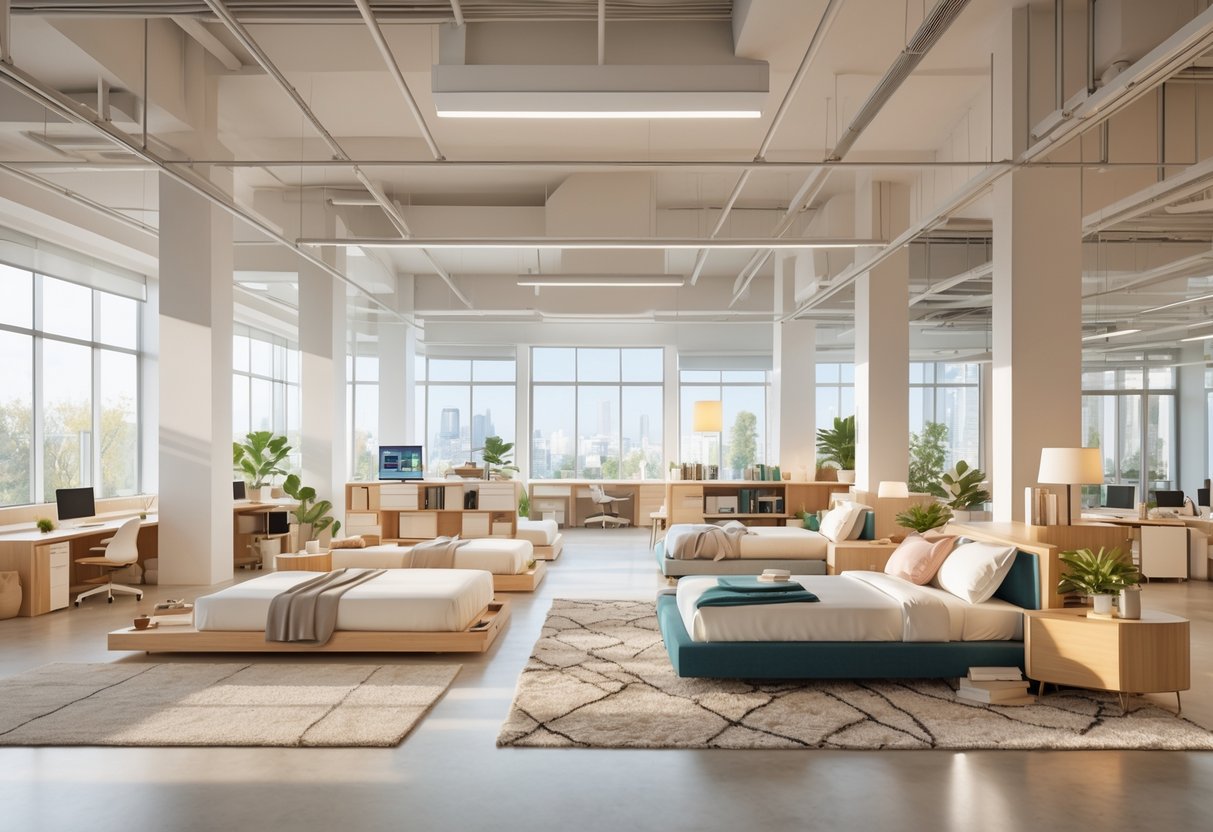
The key to a successful bedroom office is designing a layout that fits both rest and work needs without overcrowding the space. With careful planning, it is possible to make the most of small rooms by choosing the right furniture and arranging it thoughtfully. This approach benefits anyone looking to improve their home setup.
1) Use a corner desk to maximize limited bedroom space.

A corner desk fits neatly into often unused bedroom corners. This saves space and creates a dedicated work area without crowding the room.
It offers enough surface for a laptop and essentials while keeping the rest of the bedroom free. Corner desks also help separate work from rest zones within the same space.
2) Install floating shelves above the desk for efficient storage.
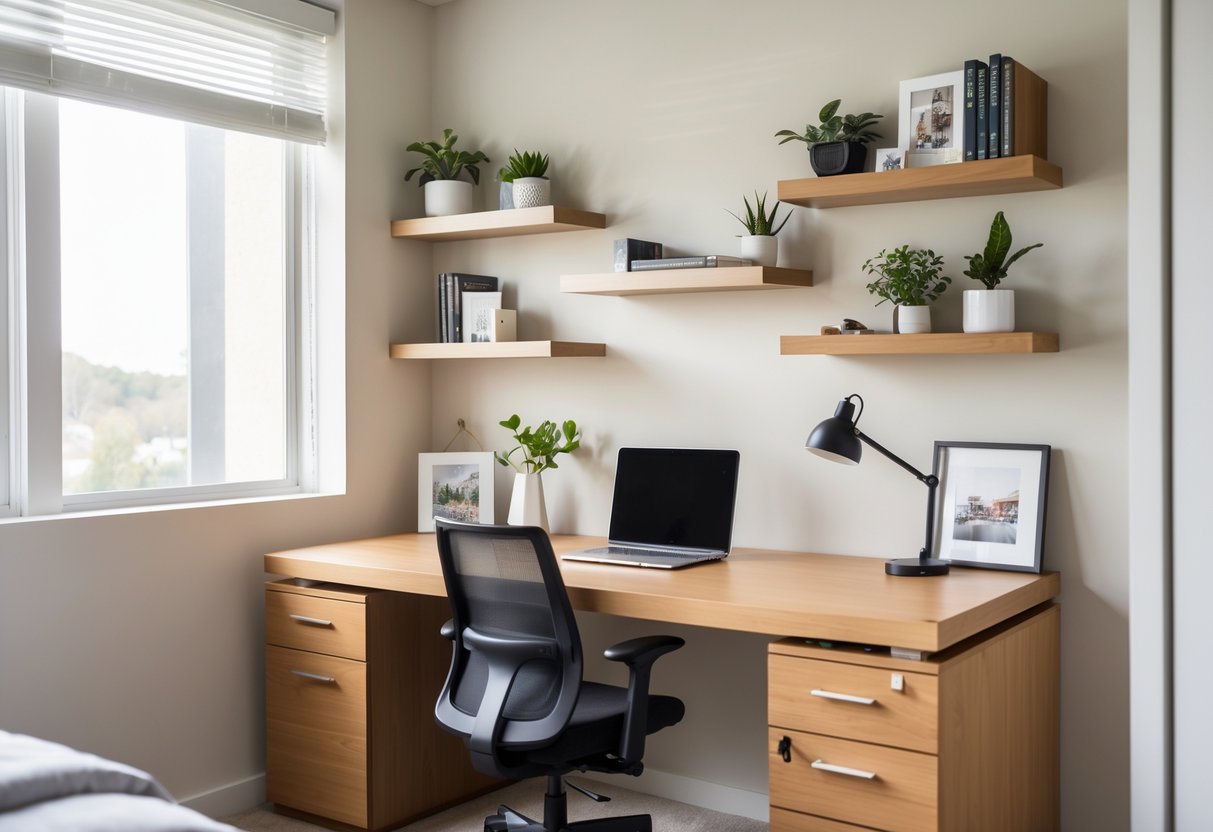
Floating shelves above the desk provide extra storage without taking up floor space. They keep books, office supplies, and decor within easy reach. This helps maintain a tidy workspace and makes the room feel less cluttered. Floating shelves also add a simple, modern look to the bedroom office.
3) Incorporate a fold-down desk to save floor space when not in use.
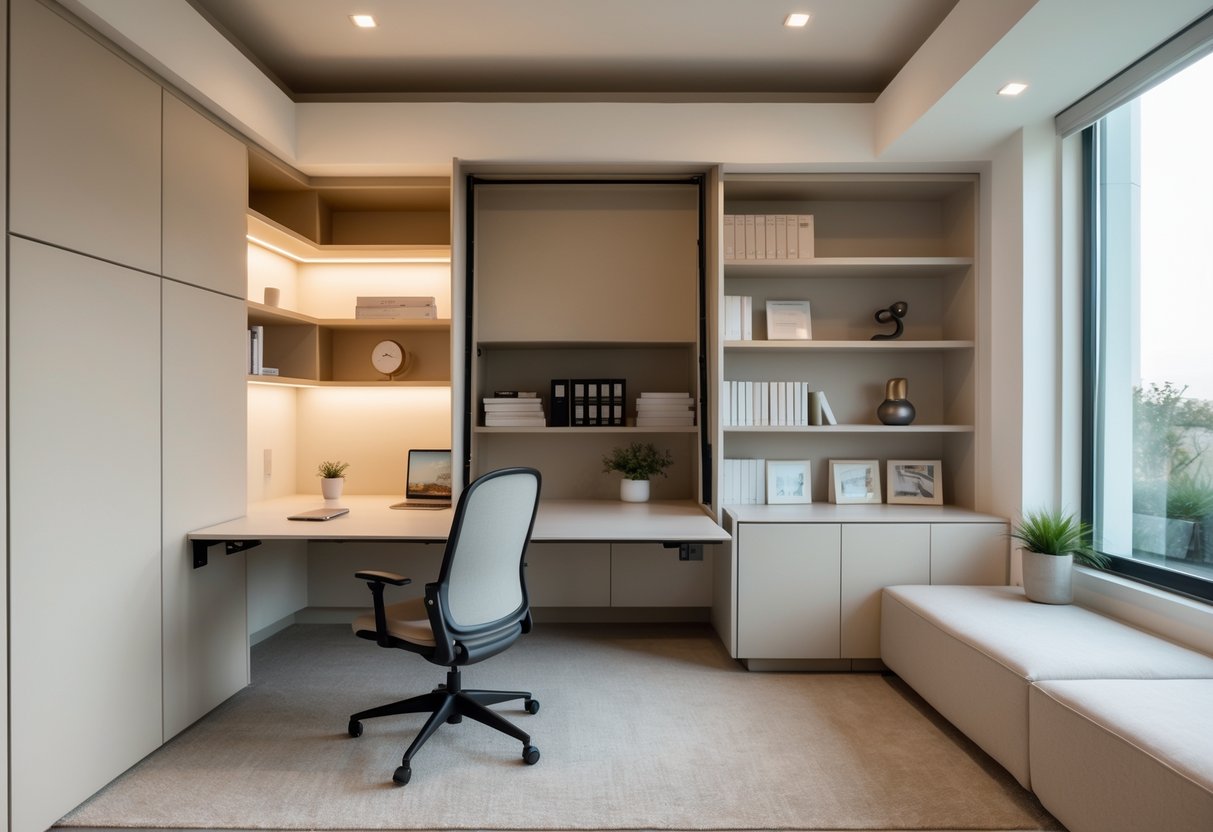
A fold-down desk is practical for small bedrooms. It mounts on the wall and folds flat when not needed. This design frees up floor space while offering a solid workspace when open.
It often includes built-in shelves or a corkboard for added function. The desk can blend with the room’s style and stay out of the way when folded.
4) Choose a compact ergonomic chair for comfort without bulk

A compact ergonomic chair saves space while supporting good posture. It fits well in small bedrooms without making the area feel crowded. Features like lumbar support and breathable mesh help maintain comfort during long work or study sessions. Selecting a chair designed for small spaces ensures both function and style.
5) Add task lighting focused on the work area to reduce eye strain
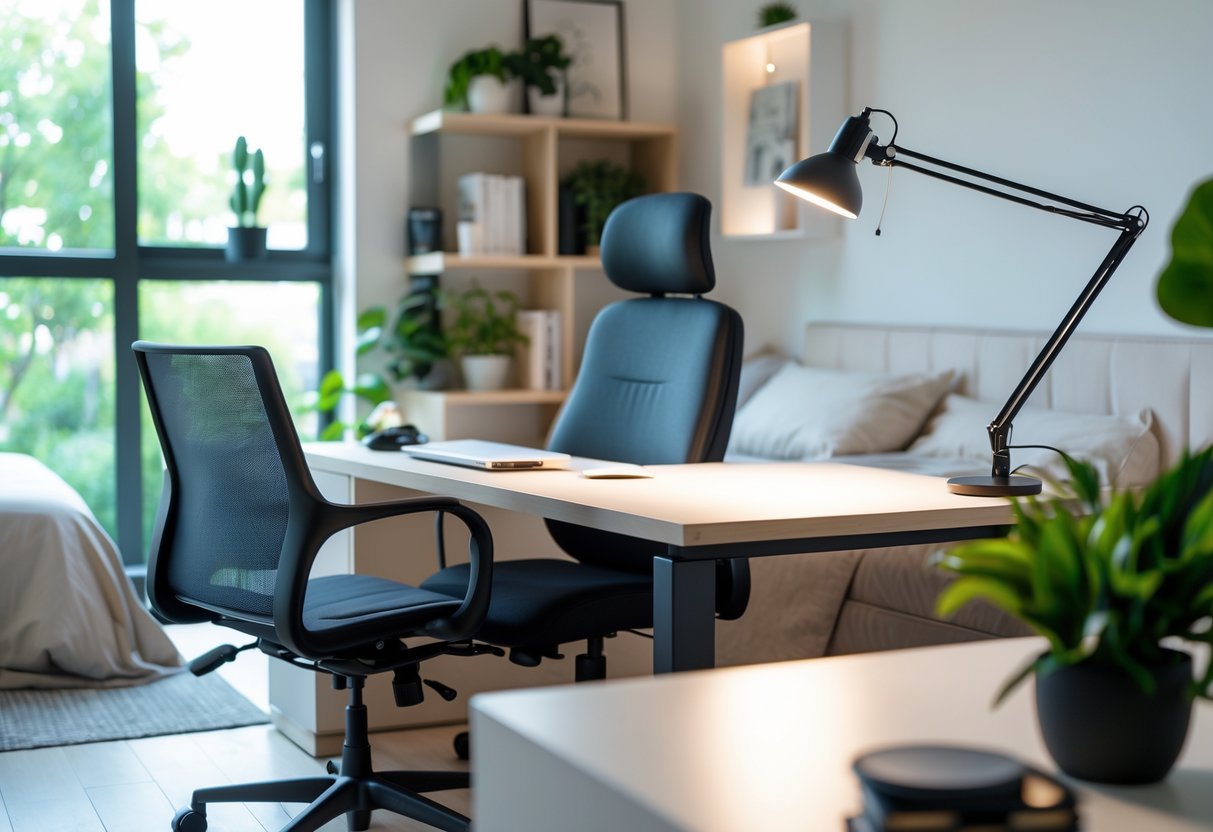
Task lighting provides focused light exactly where it is needed. This helps reduce eye strain during detailed work like reading and writing.
Proper task lighting prevents shadows that can make it harder to see. A desk lamp or adjustable light works well for this purpose.
By using task lighting, the workspace becomes more comfortable and productive. It helps maintain better focus without causing fatigue.
6) Use a room divider or curtain to visually separate work and sleep zones.
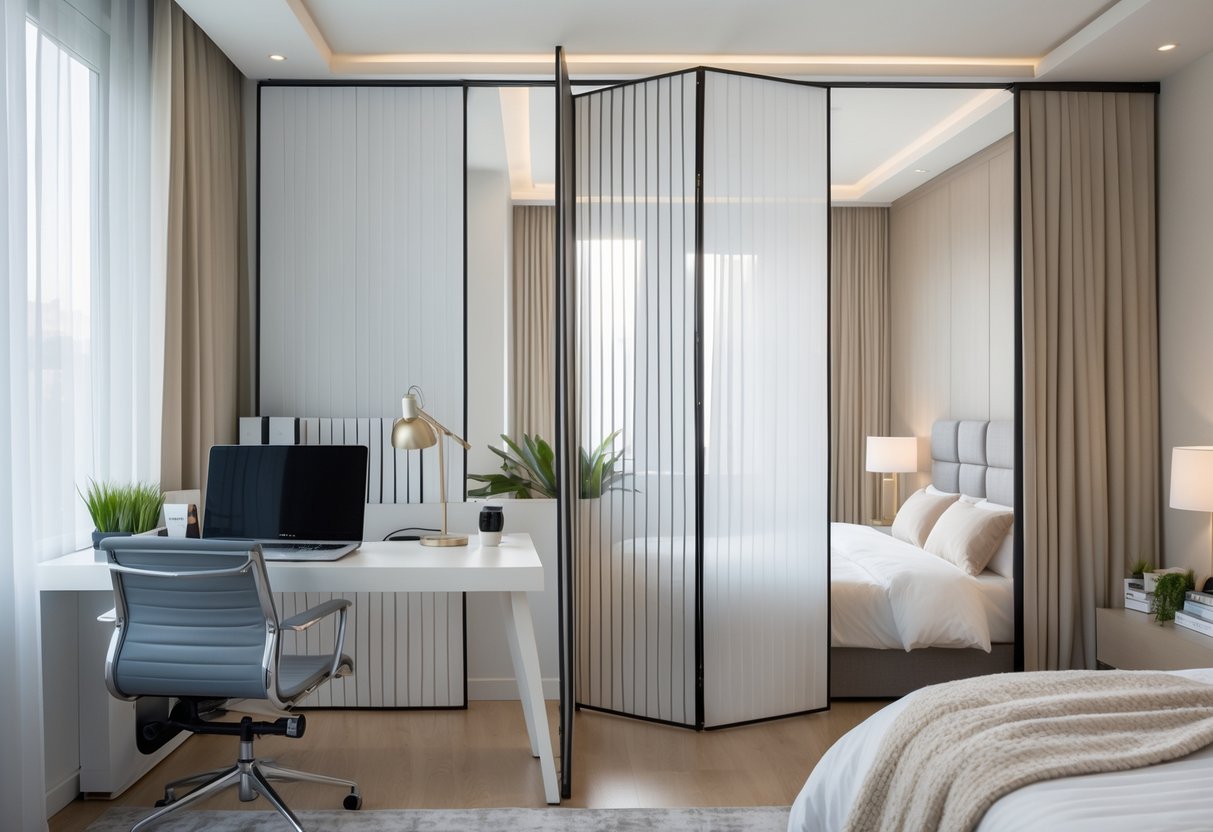
A room divider or curtain helps mark clear boundaries between work and rest areas. This separation can reduce distractions and make both zones feel distinct.
Curtains are flexible and easy to open or close, offering privacy when needed. Room dividers can also add style while organizing the space efficiently.
7) Select multi-functional furniture, like a desk with built-in drawers.
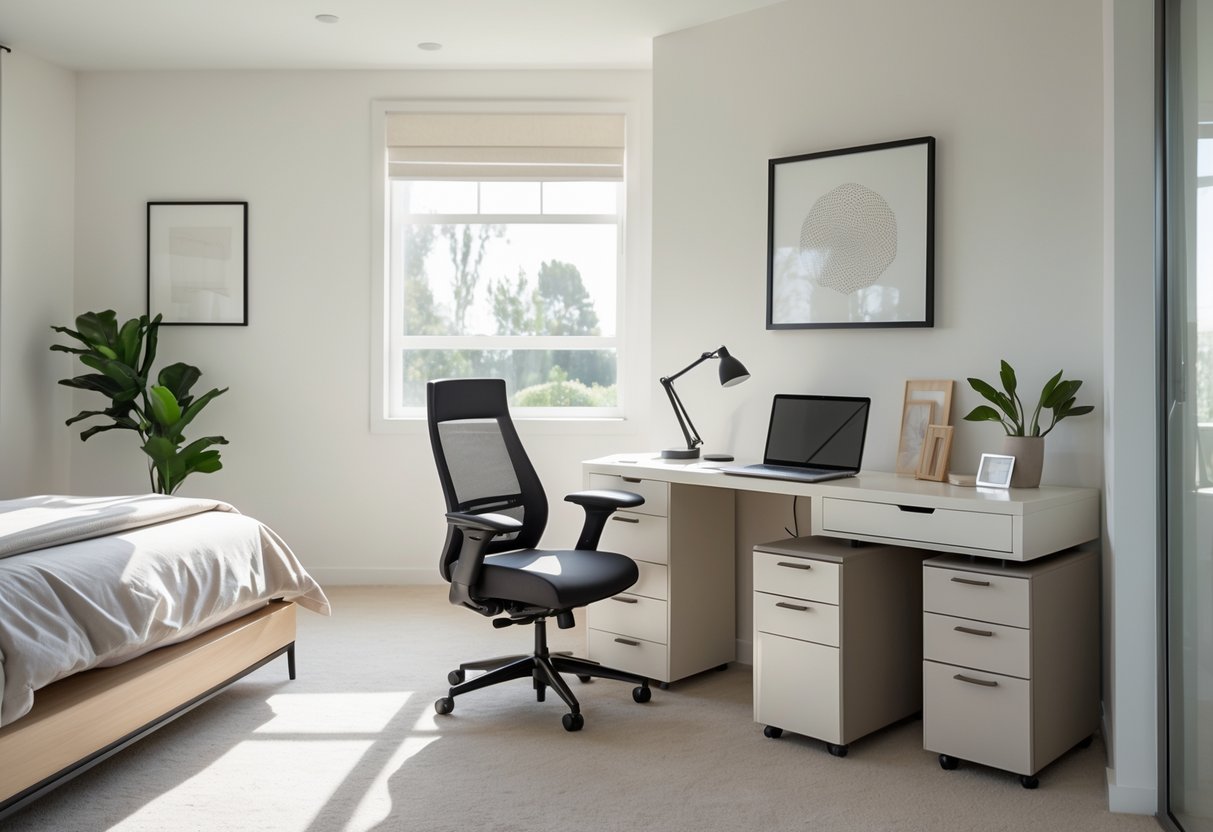
They should choose furniture that serves more than one purpose. A desk with built-in drawers helps store office supplies without taking extra space. This keeps the area tidy and efficient.
Multi-functional furniture makes small rooms feel less cluttered. It allows easy switching between work and rest. This choice supports productivity and comfort in a bedroom office.
8) Opt for calming color palettes to balance productivity and relaxation.
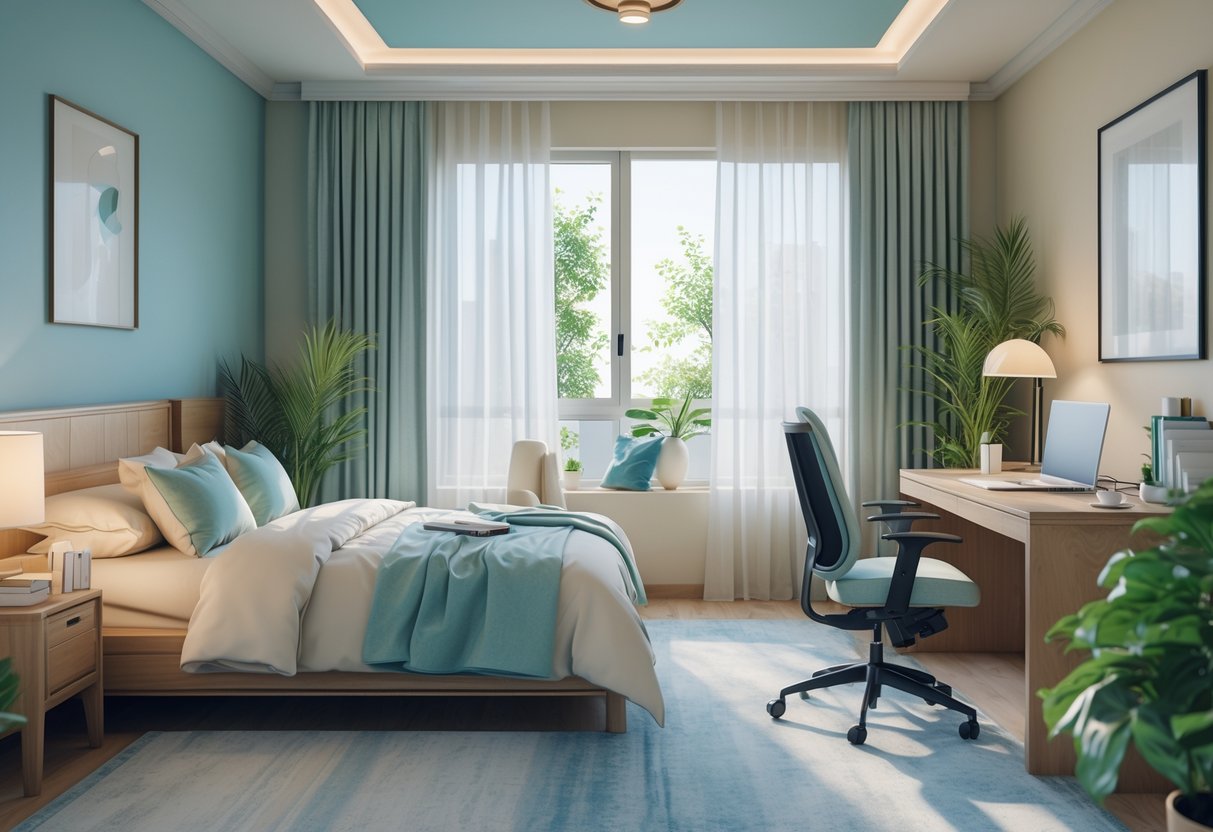
Calming colors like soft blues, gentle greens, and pastel shades help create a peaceful work environment. They reduce stress while maintaining focus.
These colors support both relaxation and productivity in a bedroom office. Choosing the right palette makes the space comfortable and effective for work.
9) Integrate cable management solutions to keep cords organized.

They can use cable organizers like trays, sleeves, or boxes to keep cords tidy. Labeling cables helps identify them quickly without making a mess.
Hiding cords under the desk or along walls reduces clutter and keeps the workspace clean. Simple steps like these improve both safety and appearance.
10) Position the desk near a window for natural light and ventilation
Placing the desk near a window allows natural light to brighten the workspace. This reduces the need for artificial lighting during the day.
Natural ventilation helps keep the room fresh and can improve comfort while working. However, it is important to avoid direct sunlight that may cause glare or heat.

